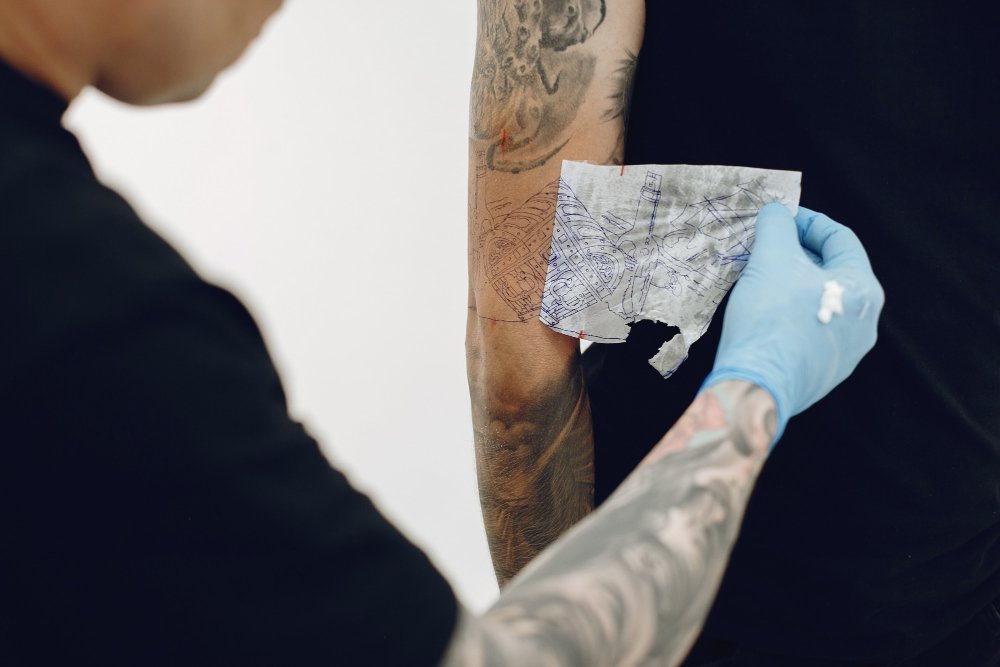

How to Design A Tattoo to create great art on body. Designing a tattoo requires special attention to detail, creativity and a deep understanding of body art. For many, a tattoo is not just an image etched on the skin, but also a representation of identity, personal story, and self-expression.
The process of designing a tattoo involves several important steps from the initial concept to the selection of style and technique. In this article, we will discuss the important steps that need to be considered to design a unique and meaningful tattoo.
1. Determine the Position
You can make some general designs that fit on different parts of the body. But the best way to customize the tattoo and make it look natural on the skin is to choose a design based on its position.
Knowing where the tattoo will be engraved gives you a clear idea of the available area. This lets you understand the scale of your design. While large tattoos are more intricate, they require proper placement to look appropriate. Incorrect placement can make a large tattoo look cramped.
Knowing the position also helps you understand the contours that the tattoo will encompass. Because the shape of your tattoo may not always look the same on all contours. The overall meaning of your tattoo design can be lost if the design looks clipped or distorted.
So, if you want to know how to design a tattoo that your customers will love, first determine the position before you settle on a design.

2. Looking for Inspiration before design a tattoo
Sometimes you have it all in mind but don’t know how to put it down on paper and then into ink. Or sometimes you find yourself staring at a blank screen with no idea what to design. Even experienced tattoo artists go through this phase.
To overcome this situation and find direction in your tattoo design process, looking for inspiration is a good idea. Browse your favorite artist’s Instagram page or website portfolio. Celebrity tattoo artists like Bang Bang, Kat Von D, and Mark Mahoney have brilliant online portfolios that can be very inspiring for budding tattoo artists.
Pinterest is another great source of inspiration. You can even create boards for different tattoo styles so that when your next tattoo project comes up, you can save yourself the time spent searching for the right inspiration. For example, a quick search for the term “tribal tattoos” on Pinterest will yield a wide range of options. You can further narrow down the options based on whether you’re looking for Filipino, Polynesian and so on tribal styles.
While it’s natural to look for inspiration, remember that there’s a fine line between getting inspired and copying a design. You’ll want to create a unique portfolio that shows your authenticity. Customers love working with authentic tattoo artists because they know they’ll get a unique design.
3. Every Artwork Starts with a Sketch
When you’re figuring out how to design a tattoo, don’t choose a complex design. Most importantly, don’t try to create all the details at once. Separate your design into sections and work on them one by one.
Sketch your ideas on paper or use a digital drawing tablet or even your iPad. Remember to separate the details in your design into different layers so that you can make changes without having to redo the entire design.
From drawing the basic shape to roughly outlining it and then adding borders, filling in colors, and adding details and highlights, each step can be separated into layers when you draw your tattoo digitally. For pencil sketches, use different sheets of tracing paper to place your layers one on top of the other.
4. Compose Your Design Carefully
Once your design is ready, the final composition determines whether or not you achieve the desired effect. Tattoo designs are often a combination of different shapes, sections of text, borders, accents, and other details. So, the way all these elements are combined can make or break the effect.
The composition of your design includes everything from the proportions of the elements combined to their alignment and positioning. In the case of digital sketches, you can always use a mockup to see how the tattoo looks on the actual surface. This helps you understand if the alignment or position of certain parts of the design need to be adjusted.
Another critical aspect of your tattoo design composition is contrast. Even the most stunning design will not have the desired impact if the contrast is poor.
Lastly, the most obvious parameter in your tattoo design is color. Once you have decided that it will be a colored tattoo and not a black-and-white design, choosing your color palette is an important step. Colors affect the contrast and therefore the legibility of the design. If you are working with a monochrome palette, remember to adjust the colors based on the customer’s skin tone so that the details remain intact.

5. Stay Informed About What’s Happening in the Tattoo World
Knowing how to design a tattoo is not enough. You must also know how to convey your design in the most efficient way. From hygienic practices to the use of the latest inks and technologies, there are many differentiators that make you stand out in a competitive world.
If there is some latest tattoo technique that is being talked about, your customers will expect you to be able to provide it. Having the best designs won’t be enough if you’re not prepared.
Take the time to update yourself with all the latest information in the industry so that your designs continue to evolve. That’s one way to stay ahead of the game.